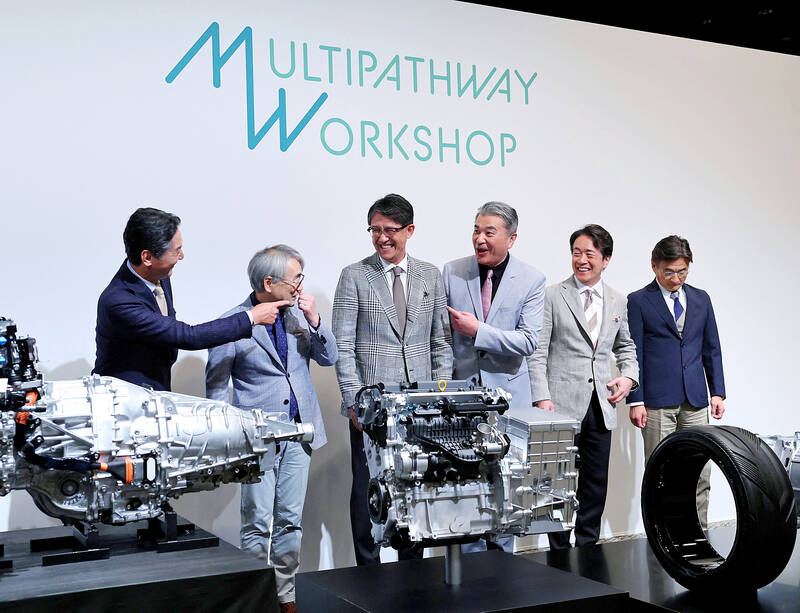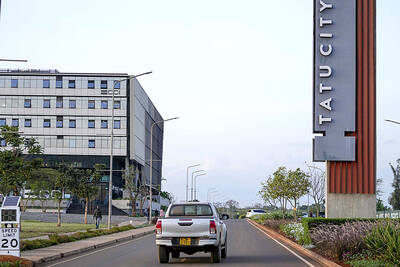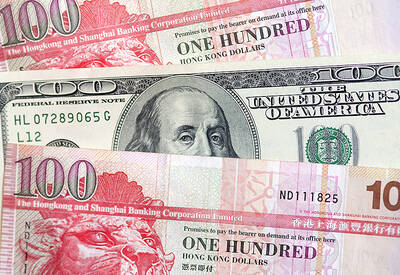Toyota Motor Corp yesterday showcased next-generation engines that can be used in vehicles as varied as hybrids and those running on biofuel, as it targets tougher emissions standards and doubles down on its strategy of selling more than just electric vehicles (EVs).
At a media event with peers Subaru Corp and Mazda Motor Corp, the world’s biggest automaker by volume displayed in-development 1.5-liter and 2-liter engines with significantly reduced volume and height compared with current engines.
“With these engines, each of the three companies will aim to optimize integration with motors, batteries and other electric drive units,” they said in a joint statement.

Photo: Reuters
Toyota owns about one-fifth of Subaru and about 5 percent of Mazda.
The three said their efforts would help decarbonize internal combustion engines by making them compatible with alternative fuel sources such as e-fuels and biofuels.
They also hope more compact engines would revamp vehicle design by allowing for lower hoods.
Toyota is widely considered an EV laggard, but a slowdown in EV growth has seen it benefit from an uptake of gasoline-electric hybrids. Refreshing its traditional engine technology against that backdrop mirrors a similar move at Mercedes-Benz AG.
The Japanese automaker said its new 1.5-liter engine would achieve volume and weight reduction of 10 percent versus its existing 1.5-liter engines, which it uses in vehicles such as its Yaris compact.
The new 2-liter turbo engine would have similar gains versus existing 2.4-liter turbo engines used in bigger models such as three-row seating sport utility vehicles.
Toyota chief technology officer Hiroki Nakajima declined to say when the company would launch models equipped with the engines.
While EVs have become more prominent in the past few years, Toyota has been following a “multi-pathway” approach to carbon neutrality with vehicles offering a range of powertrains.
It sold about 2.4 million vehicles in the January-to-March period, of which nearly two-fifths were gasoline-electric hybrids. Plug-in hybrid, fuel-cell and all-battery electric vehicles together accounted for just 2.9 percent.
Toyota chairman Akio Toyoda in January said EVs would reach a global auto market share of 30 percent at most, with hybrids, hydrogen fuel-cell and fuel-burning vehicles making up the rest.

To many, Tatu City on the outskirts of Nairobi looks like a success. The first city entirely built by a private company to be operational in east Africa, with about 25,000 people living and working there, it accounts for about two-thirds of all foreign investment in Kenya. Its low-tax status has attracted more than 100 businesses including Heineken, coffee brand Dormans, and the biggest call-center and cold-chain transport firms in the region. However, to some local politicians, Tatu City has looked more like a target for extortion. A parade of governors have demanded land worth millions of dollars in exchange

Hong Kong authorities ramped up sales of the local dollar as the greenback’s slide threatened the foreign-exchange peg. The Hong Kong Monetary Authority (HKMA) sold a record HK$60.5 billion (US$7.8 billion) of the city’s currency, according to an alert sent on its Bloomberg page yesterday in Asia, after it tested the upper end of its trading band. That added to the HK$56.1 billion of sales versus the greenback since Friday. The rapid intervention signals efforts from the city’s authorities to limit the local currency’s moves within its HK$7.75 to HK$7.85 per US dollar trading band. Heavy sales of the local dollar by

Taiwan Semiconductor Manufacturing Co’s (TSMC, 台積電) revenue jumped 48 percent last month, underscoring how electronics firms scrambled to acquire essential components before global tariffs took effect. The main chipmaker for Apple Inc and Nvidia Corp reported monthly sales of NT$349.6 billion (US$11.6 billion). That compares with the average analysts’ estimate for a 38 percent rise in second-quarter revenue. US President Donald Trump’s trade war is prompting economists to retool GDP forecasts worldwide, casting doubt over the outlook for everything from iPhone demand to computing and datacenter construction. However, TSMC — a barometer for global tech spending given its central role in the

An Indonesian animated movie is smashing regional box office records and could be set for wider success as it prepares to open beyond the Southeast Asian archipelago’s silver screens. Jumbo — a film based on the adventures of main character, Don, a large orphaned Indonesian boy facing bullying at school — last month became the highest-grossing Southeast Asian animated film, raking in more than US$8 million. Released at the end of March to coincide with the Eid holidays after the Islamic fasting month of Ramadan, the movie has hit 8 million ticket sales, the third-highest in Indonesian cinema history, Film